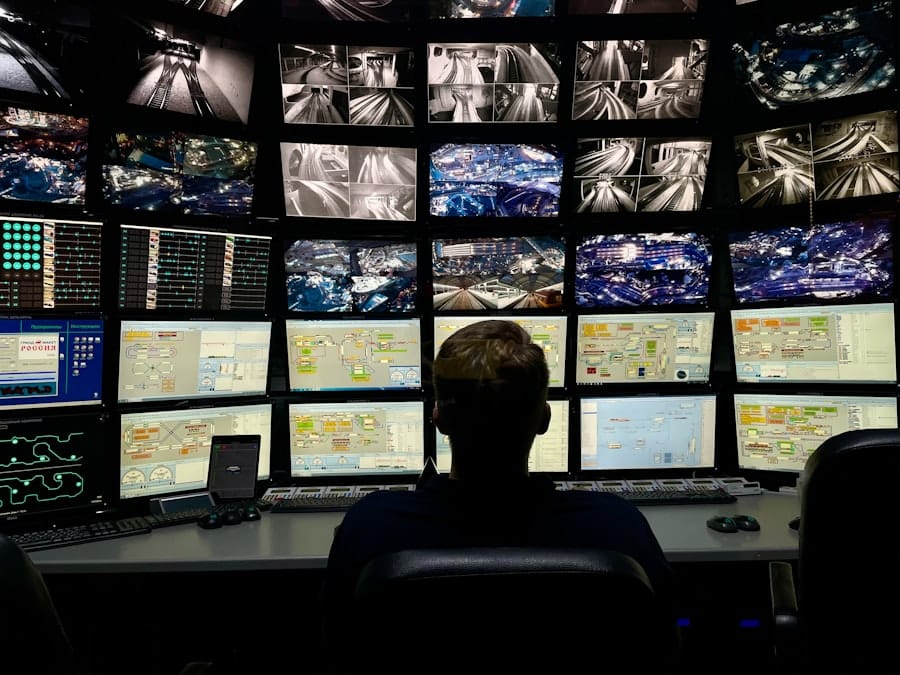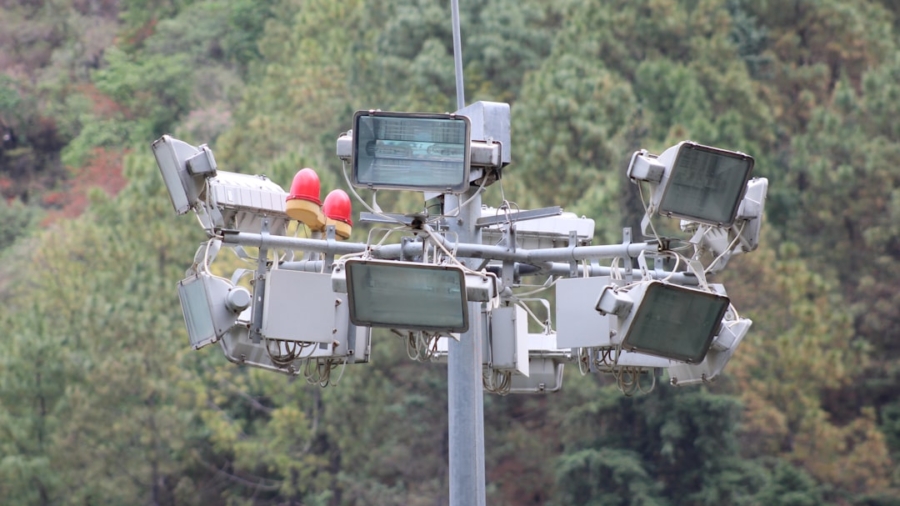As humanity ventures further into the cosmos, the need for effective space traffic management has become increasingly critical. The proliferation of satellites, space debris, and the emergence of commercial spaceflight have created a complex environment that necessitates sophisticated management systems. Traditional methods of tracking and managing space objects are becoming inadequate in the face of this growing complexity.
Enter artificial intelligence (AI), a transformative technology that promises to revolutionize how we monitor and manage space traffic. AI-powered systems can analyze vast amounts of data in real-time, predict potential collisions, and optimize satellite operations, thereby enhancing safety and efficiency in space. The integration of AI into space traffic management systems is not merely a technological upgrade; it represents a paradigm shift in how we approach the challenges of space operations.
With thousands of satellites already in orbit and many more planned for the coming years, the stakes are high. The potential for collisions between satellites or with space debris poses significant risks not only to individual missions but also to the sustainability of space activities as a whole. AI offers innovative solutions to these challenges, enabling stakeholders to make informed decisions based on predictive analytics and real-time data processing.
Key Takeaways
- AI-powered space traffic management systems are revolutionizing the way we monitor and control space traffic to ensure safety and efficiency.
- AI plays a crucial role in analyzing and predicting space traffic patterns, identifying potential collisions, and optimizing spacecraft trajectories.
- The advantages of AI-powered space traffic management systems include improved accuracy, real-time monitoring, and the ability to handle large volumes of data.
- Challenges and limitations of AI in space traffic management include the need for continuous updates and the potential for algorithmic biases.
- Current and future applications of AI in space traffic management include autonomous decision-making, space debris mitigation, and supporting the growth of commercial space activities.
The Role of AI in Space Traffic Management
AI plays a multifaceted role in space traffic management, primarily through its capabilities in data analysis, predictive modeling, and automation.
By employing machine learning algorithms, AI can identify patterns and anomalies in this data, allowing for more accurate tracking of objects in orbit.
This capability is crucial for predicting potential collisions and ensuring that satellites can adjust their trajectories proactively. Moreover, AI enhances decision-making processes by providing actionable insights derived from complex datasets. For instance, AI systems can simulate various scenarios involving multiple satellites and debris objects, assessing the likelihood of collisions under different conditions.
This predictive modeling enables operators to make informed decisions about maneuvering satellites or implementing collision avoidance strategies. Additionally, AI can automate routine tasks such as monitoring satellite health and performance, freeing up human operators to focus on more strategic aspects of space traffic management.
Advantages of AI-Powered Space Traffic Management Systems

The advantages of AI-powered space traffic management systems are manifold, particularly in terms of efficiency, accuracy, and scalability. One of the most notable benefits is the ability to process vast amounts of data at unprecedented speeds. Traditional methods often rely on manual data entry and analysis, which can be time-consuming and prone to human error.
In contrast, AI systems can continuously ingest data from multiple sources, providing real-time updates on the status of satellites and potential threats from space debris. Another significant advantage is the enhanced accuracy in predicting potential collisions. AI algorithms can analyze historical data and current trajectories to forecast future positions of satellites and debris with remarkable precision.
This capability not only improves safety but also optimizes satellite operations by allowing operators to plan maneuvers more effectively. Furthermore, as the number of satellites in orbit continues to grow—expected to reach tens of thousands in the coming years—AI systems can scale accordingly, managing increasing volumes of data without a corresponding increase in operational costs.
Challenges and Limitations of AI-Powered Space Traffic Management Systems
Despite the numerous advantages offered by AI-powered space traffic management systems, several challenges and limitations must be addressed. One primary concern is the quality and reliability of the data being fed into these systems. Inaccurate or incomplete data can lead to erroneous predictions and potentially catastrophic outcomes.
For instance, if a satellite’s position is miscalculated due to outdated or faulty telemetry data, it may not execute a necessary avoidance maneuver in time, resulting in a collision. Additionally, the complexity of space environments poses significant challenges for AI algorithms.
Developing AI models that can accurately account for these variables is a daunting task that requires continuous refinement and validation. Moreover, there is a risk that over-reliance on AI could lead to complacency among human operators, who may become less vigilant in monitoring space traffic if they trust automated systems too implicitly.
Current and Future Applications of AI in Space Traffic Management
Currently, several organizations are exploring the application of AI in space traffic management with promising results. For example, NASA has been developing AI algorithms capable of predicting potential collisions between satellites and debris using historical tracking data. These algorithms analyze thousands of objects in orbit simultaneously, providing operators with timely alerts about potential threats.
Similarly, private companies like LeoLabs are utilizing AI to enhance their tracking capabilities for low Earth orbit (LEO) satellites, offering services that help satellite operators avoid collisions. Looking ahead, the future applications of AI in space traffic management are vast and varied. As satellite constellations become more prevalent—such as those being deployed by companies like SpaceX and OneWeb—AI will play an increasingly vital role in coordinating their operations.
Future systems may incorporate advanced machine learning techniques that allow for real-time adjustments based on changing conditions in orbit. Additionally, as international collaboration in space exploration grows, AI could facilitate global coordination efforts by providing standardized data analysis tools that enhance communication between different countries’ space agencies.
Ethical and Regulatory Considerations in AI-Powered Space Traffic Management

The deployment of AI-powered space traffic management systems raises important ethical and regulatory considerations that must be addressed to ensure responsible use of technology. One significant concern is accountability: if an AI system makes a decision that leads to a collision or other adverse event, determining liability can be complex. This ambiguity raises questions about who is responsible—the developers of the AI system, the operators relying on its recommendations, or even the regulatory bodies overseeing space activities.
Moreover, there are ethical implications related to data privacy and security. The vast amounts of data collected for space traffic management often include sensitive information about satellite operations and trajectories. Ensuring that this data is protected from unauthorized access or misuse is paramount.
Additionally, as AI systems become more autonomous, there is a need for clear guidelines governing their decision-making processes to prevent unintended consequences that could arise from algorithmic biases or errors.
Collaboration and International Efforts in Developing AI-Powered Space Traffic Management Systems
The development of effective AI-powered space traffic management systems necessitates collaboration among various stakeholders, including government agencies, private companies, and international organizations. Recognizing the global nature of space activities, initiatives such as the United Nations Office for Outer Space Affairs (UNOOSA) have been working to foster international cooperation in establishing guidelines for space traffic management. These efforts aim to create a framework that encourages sharing best practices and technologies among nations.
In addition to governmental collaboration, partnerships between private companies and research institutions are crucial for advancing AI technologies in this field. For instance, companies like Astroscale are working on innovative solutions for debris removal while collaborating with academic institutions to develop AI algorithms that enhance tracking capabilities. Such collaborations not only accelerate technological advancements but also promote a shared understanding of the challenges posed by increasing congestion in space.
The Future of AI-Powered Space Traffic Management Systems
As we look toward the future of space exploration and utilization, the role of AI-powered traffic management systems will undoubtedly become more pronounced. The challenges posed by an increasingly crowded orbital environment necessitate innovative solutions that leverage advanced technologies like artificial intelligence. While there are hurdles to overcome—ranging from data quality issues to ethical considerations—the potential benefits are immense.
AI has the capacity to transform how we manage space traffic by enhancing safety, improving operational efficiency, and enabling more sustainable practices in orbit. As international collaboration continues to grow and technological advancements unfold, we can anticipate a future where AI plays an integral role in ensuring that our ventures into space remain safe and sustainable for generations to come. The journey toward effective AI-powered space traffic management is just beginning, but its implications will resonate throughout the cosmos as humanity expands its presence beyond Earth.
In the rapidly evolving field of space traffic management, AI-powered systems are becoming increasingly crucial to ensure the safe and efficient navigation of satellites and other space assets. A related article that delves into the technological advancements in software, which can be pivotal for developing such AI systems, is “The Ultimate Guide to the Best Lighting Design Software of 2023.” This article, available at

